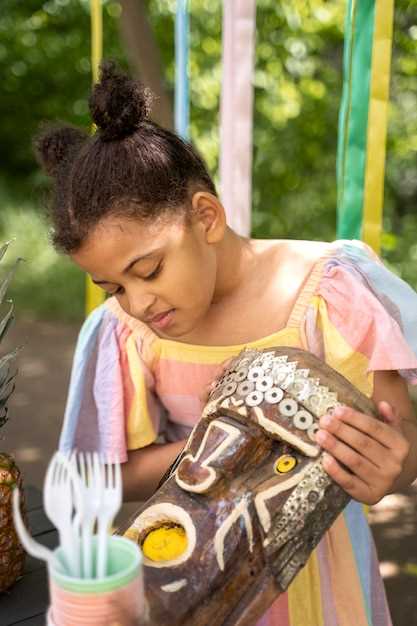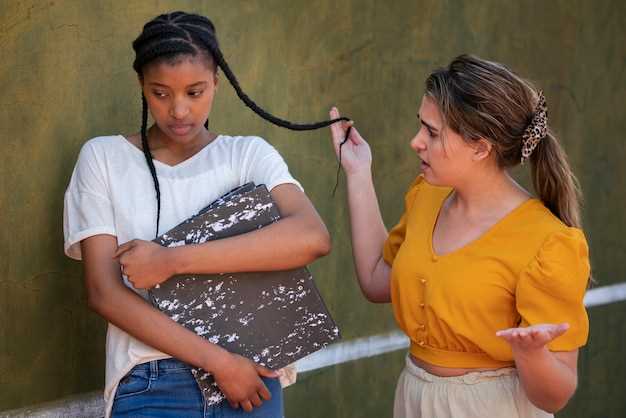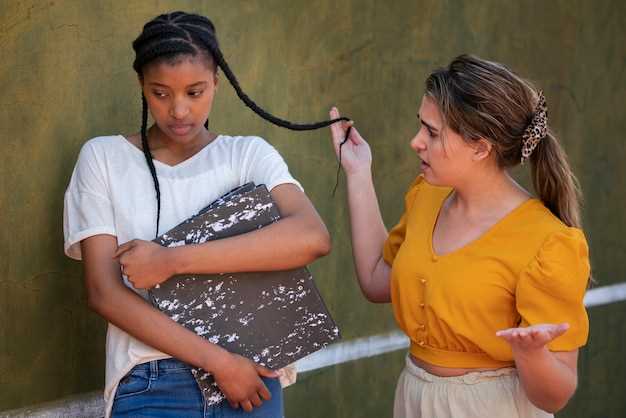In the heart of vibrant cultures, the quest for advancement unfolds. Dynamic voices arise, providing hope and direction. A profound determination fuels the drive to inspire and uplift. Each narrative adds a unique thread to the fabric of society. Emerging ideas hold the promise of a brighter tomorrow.
The potential for growth is evident in every interaction, every story shared. While challenges persist, they serve as catalysts for exploration and collaboration. Learning takes on new dimensions when driven by purpose. It is not merely about acquiring knowledge, but about fostering a shared vision that resonates deeply within the fabric of cultural identity. This journey reveals how critical perspectives can reshape paths toward a collective bright future, inviting everyone to participate in an enriching dialogue.
The strength of community lies in its rich traditions and shared values. As mentors guide the next generation, hope transfers through generational wisdom. The process involves more than teaching; it becomes an exchange of experiences that nurtures resilience. Together, stakeholders navigate uncharted territories, crafting strategies that respect history while carving paths forward.
In this transformative process, passion fuels action and innovation. Existing structures are reimagined to align with aspirational goals. Individuals step into roles that enable them to influence beyond traditional boundaries. Here, authentic connections inspire new understandings and collaborative endeavors reflect the essence of collective aspirations.
Empowering Change through Educational Leadership

Within the realm of transformation, the role of guiding figures is paramount. They inspire and motivate others to reach their full potential. Their influence can reshape perspectives and create new pathways for growth. This dynamic interaction fuels progress.
Effective guidance is not simply about directing; it involves nurturing talent and fostering collaboration. With each step, innovative ideas emerge. Individuals find their voices and begin to articulate their aspirations. Such environments thrive on mutual respect and understanding.
When leaders prioritize listening and inclusivity, a remarkable synergy develops. People feel valued, and their contributions enhance the collective experience. This creates a ripple effect that propels everyone forward. As bonds strengthen, new opportunities arise, paving the way for bold initiatives and exceptional achievements.
Furthermore, the integration of culturally relevant practices enriches the entire educational experience. By honoring traditions and values, leaders can create settings where everyone feels connected and empowered to engage actively. Such recognition fosters a sense of belonging that is essential for success.
In essence, the impact of insightful stewardship goes beyond immediate results. It lays the foundation for a vibrant future marked by resilience and innovation. The journey may not always be easy, yet with perseverance and commitment, the possibilities are endless.
Indigenous Knowledge and Community Strength

Understanding the past is essential for a vibrant future. The essence of traditional wisdom is often found in the stories told and the practices shared. These narratives encapsulate values, norms, and customs that unite people. Wisdom gained from generations fosters resilience and innovation within a society. Collective memory provides members with a sense of belonging.
This culture of sharing cultivates a strong identity. When individuals feel connected to their heritage, they thrive. Transmitting knowledge intergenerationally serves as a bridge connecting the past and future. Relationships formed within and between groups amplify social networks. These interdependent ties lay the foundation for communal survival and flourishment.
| Practice | Significance |
|---|---|
| Storytelling | Preserves history and instills values in younger generations. |
| Sustainable Practices | Encourages respect for the environment and resource management. |
| Art and Music | Reflects cultural identity and promotes social cohesion. |
| Medicinal Knowledge | Demonstrates self-reliance and holistic approaches to health. |
The exchange of this knowledge not only nurtures cultural pride but also reinforces shared goals. The ability to adapt ancient practices in modern contexts reveals ingenuity. When approached with respect, these traditions can guide contemporary solution-seeking. Fostered unity in diversity reinforces purpose within the group, leading to strengthened social frameworks. Understanding and applying these rich backgrounds can unleash potential that lies within.
Understanding Traditional Teaching Practices
Traditional methods of instruction involve a rich tapestry of cultural knowledge and community engagement. These approaches emphasize experiential learning and respect for nature. They are deeply rooted in the values and beliefs of the people. Elders often play a crucial role in this learning process. Stories, songs, and hands-on experiences connect generations together.
Learning is not confined to a classroom. It transcends the boundaries of conventional education, taking place in various settings, such as the land, homes, and gathering places. Different communities may have unique pedagogical methods, but the common thread is the significance of relationships. Relationships with mentor figures, family members, and the environment shape knowledge acquisition.
In these practices, the act of teaching is reciprocal. Both students and instructors learn from each other, creating a dynamic environment rich in dialogues and shared experiences. Observations and participation establish a sense of belonging and responsibility among learners. Stories shared round a fire can instill values and lessons more powerfully than textbooks ever could. This holistic approach involves not just intellect but emotions, senses, and spirituality.
Moreover, traditional educators often tailor their methods to individual learners. Each person’s journey is unique, thus creating an inclusive atmosphere where everyone can thrive. Flexibility is key; adjustments are made according to the learners’ needs and context. Such practices stand in stark contrast to rigid educational systems that prioritize standardized assessments and memorization techniques.
Ultimately, by understanding these foundational practices, one can appreciate how knowledge has been handed down through centuries. It reveals a profound respect for community wisdom and promotes sustainable growth. This recognition is essential for fostering an environment where learning can flourish authentically and meaningfully.
Building Resilience in Indigenous Youth
Fostering strength in young people from native backgrounds is crucial. It entails more than just support; it requires a deep understanding of their unique experiences. Strengthening their capabilities allows them to navigate challenges. It prepares them for a future full of possibilities. By nurturing their inherent qualities, we lay the groundwork for lasting growth.
This journey involves recognizing the rich cultural heritage they possess. Celebrating traditions, histories, and languages can instill pride and confidence. Connection to these elements reinforces identity. Young individuals flourish when they see value in their roots. It fosters a sense of belonging that is vital for mental health and well-being.
- Cultural mentorship programs
- Community engagement activities
- Creative expression opportunities
- Support networks for peer connections
Each of these strategies plays a significant role in cultivating resilience. They provide platforms for youth to express themselves and share their stories. Collective gatherings can lead to inspiration and learning. This sense of unity encourages them to face adversity head-on.
Moreover, access to resources is indispensable in building resiliency. Educational materials, counseling services, and skill-building workshops can create pathways to success. These resources not only enhance personal growth but also enrich community ties. They empower young individuals to take active roles in their lives, allowing them to dream bigger and reach higher.
- Recognize strengths and abilities
- Encourage collaborative projects
- Highlight role models from their backgrounds
- Promote self-advocacy
By implementing these actionable steps, we can significantly enhance their ability to cope with challenges. The ripple effect of such initiatives not only transforms individual lives but strengthens the entire fabric of society. Investing in resilience leads to a brighter and more promising future for all.
Collaboration with Elders and Community Leaders
Working together with respected members of a community fosters a sense of unity and shared purpose. These relationships can build trust and promote sustainable practices. When elders and leaders come together, their wisdom is invaluable. Their collective knowledge shapes the future of the group.
Such collaborations can take many forms. Meetings, workshops, and informal gatherings facilitate open dialogue. Creating opportunities for intergenerational exchange encourages learning. Engaging with these vital figures connects younger generations to their roots.
By tapping into the rich heritage and experiences they offer, communities can develop tailored solutions for their unique needs. Elders often carry stories and teachings that resonate on deeper levels, bridging past and present. Their involvement is crucial in defining paths forward that honor traditions while addressing contemporary challenges. Strengthening these bonds enhances resilience and fosters a robust sense of identity.
Involving community leaders not only amplifies voices but also nurtures innovative practices. Their participation ensures that initiatives align with local values and priorities. Additionally, such engagement inspires a sense of ownership among all members. When individuals feel invested, they are more likely to contribute positively.
This collaborative spirit cultivates an environment where every opinion matters. Encouraging open discussions leads to informed decision-making. Balancing traditional wisdom with modern insights creates a dynamic dialogue. Ultimately, this synergy paves the way for holistic development and sustainability.
Innovative Strategies for Educational Growth

New approaches are essential for enhancing learning experiences. They create opportunities for personal development. By integrating traditions with modern methodologies, we can inspire students. Engagement is key to fostering a love for knowledge. Every initiative should resonate with the aspirations of individuals.
Strategies like mentorship programs offer invaluable support to learners. Hands-on activities enrich the curriculum and make it relevant. Collaborative projects encourage teamwork and confidence. It’s important to include local languages and cultures in teaching materials. This enhances relevance and nurtures pride in identity.
By combining technology with culturally significant practices, innovative pathways become accessible. Digital resources allow for diverse perspectives and flexible learning environments. Furthermore, community involvement in the decision-making process cultivates a sense of ownership. Parents and elders contribute wisdom and tradition, bridging the gap between past and present.
Continuing education for facilitators ensures improved methods and practices. Professional development opportunities can revolutionize teaching skills. This leads to enhanced student outcomes and a richer understanding of diverse topics. Embracing creativity sparks curiosity and motivates learners to explore. Together, these strategies forge a bright future for all involved.
Transforming Curricula with Indigenous Perspectives
The integration of diverse viewpoints into academic programs holds immense potential. By acknowledging various worldviews, we can create a more holistic understanding of history and culture. These perspectives can enrich the learning environment and foster deeper connections among students. The goal is to cultivate respect and appreciation for all backgrounds. It’s crucial to approach this task with sensitivity and creativity.
Curriculum innovation often begins with critical examination. What are the stories that have been overlooked? Who are the voices often silenced in educational narratives? An inviting and inclusive syllabus not only highlights the richness of these narratives but also encourages students to engage with them actively. Art, literature, and oral traditions are just a few avenues that can convey these essential lessons.
Moreover, actively collaborating with local elders and knowledge holders strengthens the educational journey significantly. Their insights provide authenticity and deeper understanding. Incorporating their wisdom into lessons gives rise to a meaningful exchange of ideas. It turns classrooms into vibrant spaces for discussion and discovery. This process encourages questions that challenge preconceived notions and stereotypes.
Additionally, practical applications of these transformative concepts can lead to innovative teaching methodologies. For example, experiential learning activities that involve community engagement help anchor theoretical knowledge in real-world contexts. This bridging of knowledge not only aids retention but also empowers students to see themselves as agents of progress in society. By embedding these vital teachings within the curricula, we inspire a new generation to appreciate the tapestry of human experience.
In conclusion, redefining educational approaches with a focus on multifaceted perspectives can create lasting impacts. The benefits extend beyond mere knowledge acquisition; they instill a sense of belonging and openness toward others. Consequently, we cultivate an environment where every student feels valued and heard. This shift is not just beneficial but essential for a well-rounded education that reflects the diverse fabric of our society.
Creating Safe Spaces for Learning
Fostering environments where individuals feel secure and respected is crucial. Safety encourages open dialogues and reduces barriers. When learners feel comfortable, they engage more deeply. A sense of belonging leads to better outcomes. Establishing such atmospheres involves understanding cultural nuances and addressing unique needs.
- Respectful interactions are essential.
- Active listening fosters trust.
- Celebrating diverse backgrounds enriches the experience.
- Encouragement of self-expression is vital.
These elements contribute to an all-encompassing approach that values everyone’s perspective, ultimately nurturing a rich tapestry of learning experiences where individuals can flourish both academically and personally.
- Create spaces free from discrimination.
- Implement programs that respect various traditions.
- Encourage peer support and mentorship.
- Facilitate workshops on emotional intelligence.
Such strategies not only promote personal growth but also empower individuals to take charge of their learning journeys, fostering resilience and creativity in a nurturing environment.
Utilizing Technology in Traditional Education
The integration of modern tools into time-honored teaching methods can enhance learning experiences. By incorporating various digital resources, educators can stimulate engagement and foster a deeper understanding of cultural knowledge. Students today are growing up in a tech-savvy world. They are naturally inclined towards digital platforms, which provides a unique opportunity for teachers.
Technology can bridge the gap between past and present. For instance, integrating storytelling through multimedia presentations can make cultural tales more vivid and relatable. Utilizing virtual classrooms fosters collaboration and connectivity among learners who might be geographically distant. This method redefines traditional boundaries of learning.
Interactive apps can also provide engaging ways to explore heritage and history. When students utilize devices to access information, they take an active role in their education. This shift encourages curiosity and motivates them to discover more. Digital tools can now enhance real-world projects, enabling students to apply their knowledge in meaningful contexts.
By weaving together technology and traditional knowledge, a richer learning environment emerges. In this way, the fusion of past and present not only honors cultural legacies but also prepares learners for a dynamic future. Educators have a unique role in this transition. They must discern the appropriate tools that resonate with their unique contexts.
Ultimately, the thoughtful integration of technology into conventional practices opens a pathway for innovation. Such approaches enable learners to appreciate their heritage while embracing contemporary methods. It encourages a blended learning experience that respects history yet prepares for tomorrow’s challenges. This creates a more holistic educational journey.
Leading Initiatives for Cultural Revitalization
Reviving cultural identity is essential for fostering a sense of belonging and purpose. It involves collective efforts to reconnect with traditions and practices passed down through generations. Preserving heritage can take many forms, from language preservation to artistic expression. These initiatives not only uplift individual spirits but also strengthen social bonds.
Collaboration plays a pivotal role in this process. Engaging various stakeholders, including elders, artists, and youth, creates a vibrant tapestry of ideas. Workshops, community gatherings, and cultural festivals are just a few avenues to encourage participation. Such activities spark interest in cultural narratives and wisdom.
Success hinges on a shared vision. By crafting initiatives that resonate with local values, communities become active participants in their own cultural revival. The passion of individuals fuels these movements, driving them to explore age-old practices while innovatively adapting to modern contexts.
Moreover, storytelling serves as a powerful tool for dissemination. Oral traditions carry essential lessons and history, bridging gaps between past and present. In embracing this storytelling aspect, the younger generation gains access to their roots, fostering both pride and knowledge.
In summary, leading efforts to reclaim cultural identity requires dedication from all facets of life. It invites members of the society to reflect upon their shared history. As connections deepen, resilience flourishes, encapsulating a richness that transcends individual experiences and revitalizes the entire community.
Video:
Fountain of Hope – Holistic Change Through Indigenous Leadership
Fountain of Hope – Holistic Change Through Indigenous Leadership by Dwell Community Church 37 views 6 months ago 3 minutes, 2 seconds
Q&A:
What is the main goal of educational leadership in Indigenous communities?
The primary goal of educational leadership in Indigenous communities is to foster an environment that empowers students, educators, and families by integrating Indigenous knowledge and cultural practices into the education system. This approach aims to promote academic success while preserving and honoring Indigenous identities, languages, and traditions. By prioritizing culturally relevant pedagogy, educational leaders aim to ensure that Indigenous students receive a holistic education that respects their heritage and meets their needs.
How can educational leaders effectively incorporate Indigenous knowledge into the curriculum?
Educational leaders can incorporate Indigenous knowledge into the curriculum by first collaborating with Indigenous community members, elders, and cultural experts to ensure authenticity and relevance. This can include embedding Indigenous perspectives into various subjects, such as history, science, and the arts, allowing students to explore their culture and heritage. Furthermore, providing professional development for teachers on Indigenous pedagogies and inclusive teaching practices is essential to support this integration. Additionally, creating a safe and inclusive school environment where Indigenous students feel valued and represented is vital for fostering a positive learning experience.
What challenges do Indigenous communities face in educational leadership?
Indigenous communities face various challenges in educational leadership, including systemic inequities, funding disparities, and a lack of representation in decision-making processes. Historical marginalization and ongoing stereotypes can hinder the collaboration between Indigenous and non-Indigenous educators. Additionally, there can be a disconnect between mainstream educational practices and Indigenous cultural values, which may lead to resistance or disengagement from Indigenous students and families. Addressing these challenges requires acknowledging past injustices and actively working towards building trusting partnerships, equitable resources, and culturally responsive teaching methods.
What role do community engagement and partnerships play in empowering educational change?
Community engagement and partnerships are crucial for empowering educational change in Indigenous communities. When educational leaders involve community members in decision-making, curriculum development, and school activities, they help to create a sense of ownership and pride in the educational process. Effective partnerships with local organizations, cultural groups, and families enhance the relevance of education by ensuring it reflects the community’s values and needs. These collaborations can provide valuable resources, support programs, and opportunities for students, ultimately leading to improved educational outcomes and a stronger community identity.
What strategies can be implemented to support Indigenous students’ academic success through leadership?
To support Indigenous students’ academic success through leadership, educators can implement several strategies: Firstly, promoting a culturally responsive curriculum that respects and includes Indigenous knowledge and history encourages engagement. Secondly, fostering strong relationships with students and their families lays the groundwork for a supportive learning environment. Providing targeted academic support, mentorship programs, and resources tailored to Indigenous students can also help bridge gaps in achievement. Furthermore, cultivating a school culture that honors diversity and actively works to eliminate biases ensures all students feel valued, which is essential for their overall success.
What are the key strategies employed by educational leaders to empower Indigenous communities?
Educational leaders employ a variety of key strategies to empower Indigenous communities. First, they prioritize culturally relevant curricula that reflect the histories, traditions, and values of Indigenous peoples. This not only makes education more relatable but also instills pride in Indigenous identities among students. Second, they build strong partnerships with local Indigenous organizations and leaders to ensure that the educational policies and practices are aligned with the community’s needs and aspirations. Third, they promote inclusive educational environments by training staff on cultural competence and encouraging the involvement of families in the educational process. Lastly, they advocate for equitable funding and resources for Indigenous schools, which are often underfunded, to ensure high-quality education for all students. Through these strategies, educational leaders facilitate a more empowering educational experience that fosters self-determination and community resilience.
How does educational leadership in Indigenous communities differ from traditional educational leadership models?
Educational leadership in Indigenous communities differs significantly from traditional educational leadership models primarily in its focus on community involvement and cultural relevance. Unlike conventional models that may prioritize standardized testing and uniform curricula, Indigenous educational leadership emphasizes the integration of Indigenous knowledge systems, languages, and cultural practices into the educational framework. Leaders in these communities often adopt a more holistic and collaborative approach, engaging elders, families, and community members in decision-making processes. This contrasts with more hierarchical traditional models, where decisions may come from higher authorities without community input. Furthermore, Indigenous educational leadership tends to prioritize social justice issues, aiming to address the historical inequities faced by Indigenous peoples. This includes advocating for policies that respect Indigenous rights and promote a more equitable educational landscape, thus creating a learning environment that is not only about academic achievement but also about cultural survival and empowerment.
